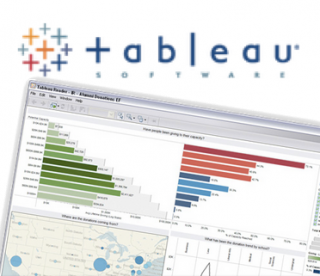

Data Transformation: Power BI includes tools that allow users to reshape and clean data for analysis.Data Modeling: Power BI enables users to create and manage relationships between different data sources, define calculations, and develop measures and KPIs.

Data Exploration: Power BI allows users to explore deeply by drilling into data points, filtering data, and creating hierarchies.Data Visualization: Power BI offers a variety of visualizations, including bar charts, line charts, pie charts, maps, and many more, which help users to gain insights from data.Some of the critical elements of Power BI include: Power BI is a comprehensive business analytics tool that offers a wide range of features to help users analyze, visualize, and share data. With its user-friendly interface and powerful visualization capabilities, Tableau has become popular for businesses and organizations looking to make data-driven decisions. Tableau provides a suite of products, including Tableau Desktop for creating and publishing visualizations, Tableau Server for sharing and collaborating on data and visualizations across an organization, and Tableau Prep for preparing and cleaning data before analysis. It also allows users to perform data cleaning and transformation tasks, create custom calculations, and generate insights using advanced analytics features. Tableau can connect to various data sources, including databases, spreadsheets, big data platforms, and cloud services. Tableau provides a wide range of chart types and visualization options, such as line charts, bar charts, maps, scatter plots, and many more. It allows users to quickly analyze and explore large and complex datasets using a drag-and-drop interface without requiring coding or programming skills. Tableau is a data visualization and business intelligence tool that enables users to connect, visualize and share data in a highly interactive and intuitive way. With its powerful data modeling and analysis capabilities, Power BI enables organizations to make data-driven decisions and gain insights into their business performance. Power BI can be accessed through a web browser, mobile device, or desktop application and integrated with other Microsoft tools like Excel and SharePoint. It allows users to connect to multiple data sources, clean and transform data, create custom calculations, and visualize data through charts, graphs, and tables. It provides interactive visualizations and business intelligence capabilities with an interface simple enough for end-users to create reports and dashboards. Power BI is a business analytics service by Microsoft. It can create a wide range of different visualization to present the data and showcase insights interactively. While Tableau is a powerful Business Intelligence tool that manages the data flow and turns data into actionable information. Power BI is a business analytics service provided by Microsoft that can analyze and visualize data, extract insights, and share it across various departments within your organization. Let's jump on to the significant differences between Power and Tableau and help you overcome some of the challenges. Often learners, practitioners, and researchers come into a dilemma to decide which one of the tools they should learn or use in their work. They help you perform data analysis, data manipulation, and data visualization to make sense of business data and draw insights. Power BI and Tableau are two important Business Intelligence (BI) technologies for the collection, integration, analysis, and presentation of business information.


 0 kommentar(er)
0 kommentar(er)
